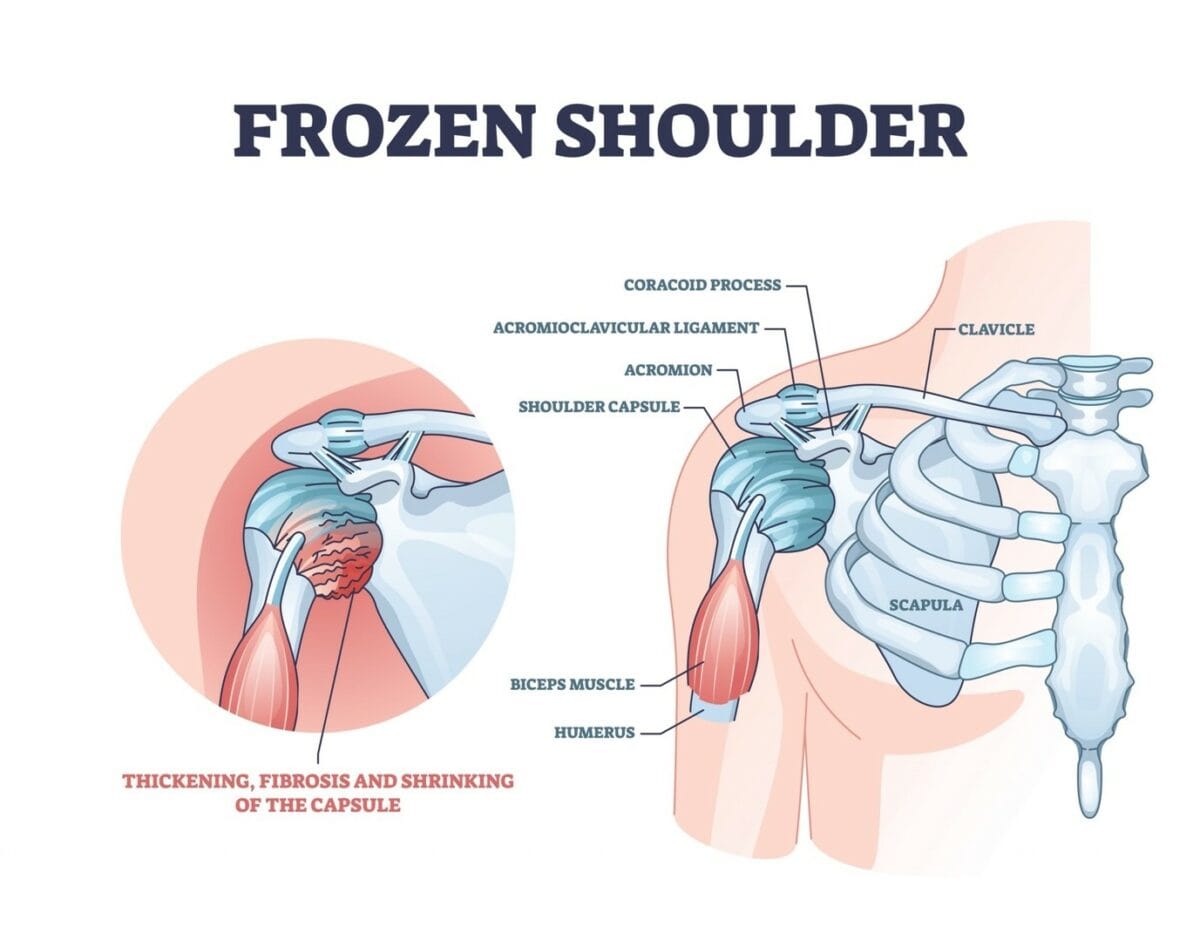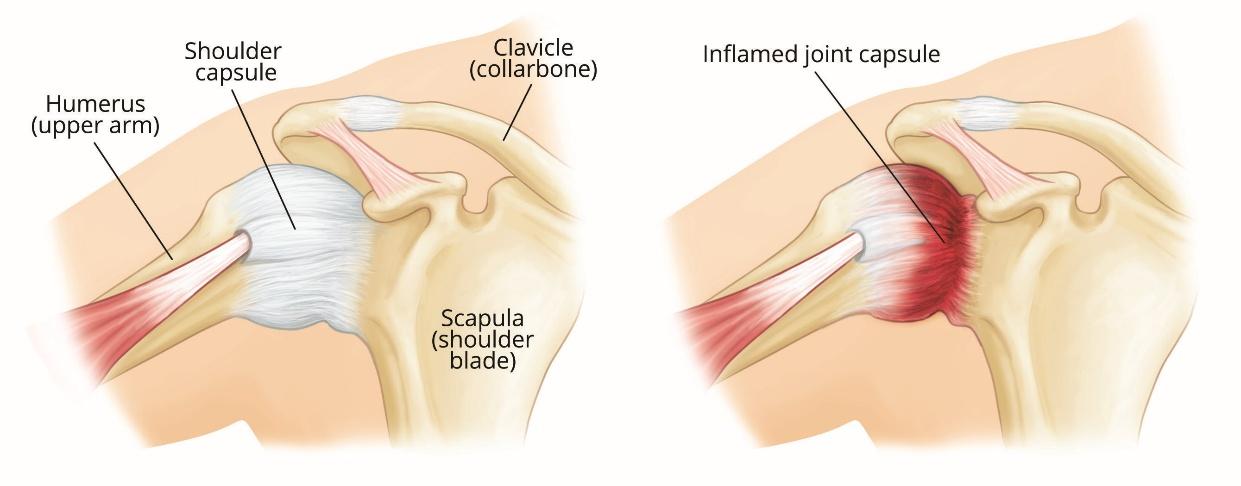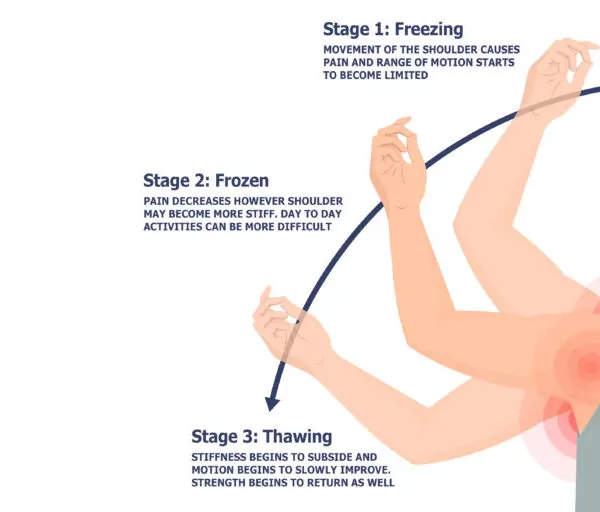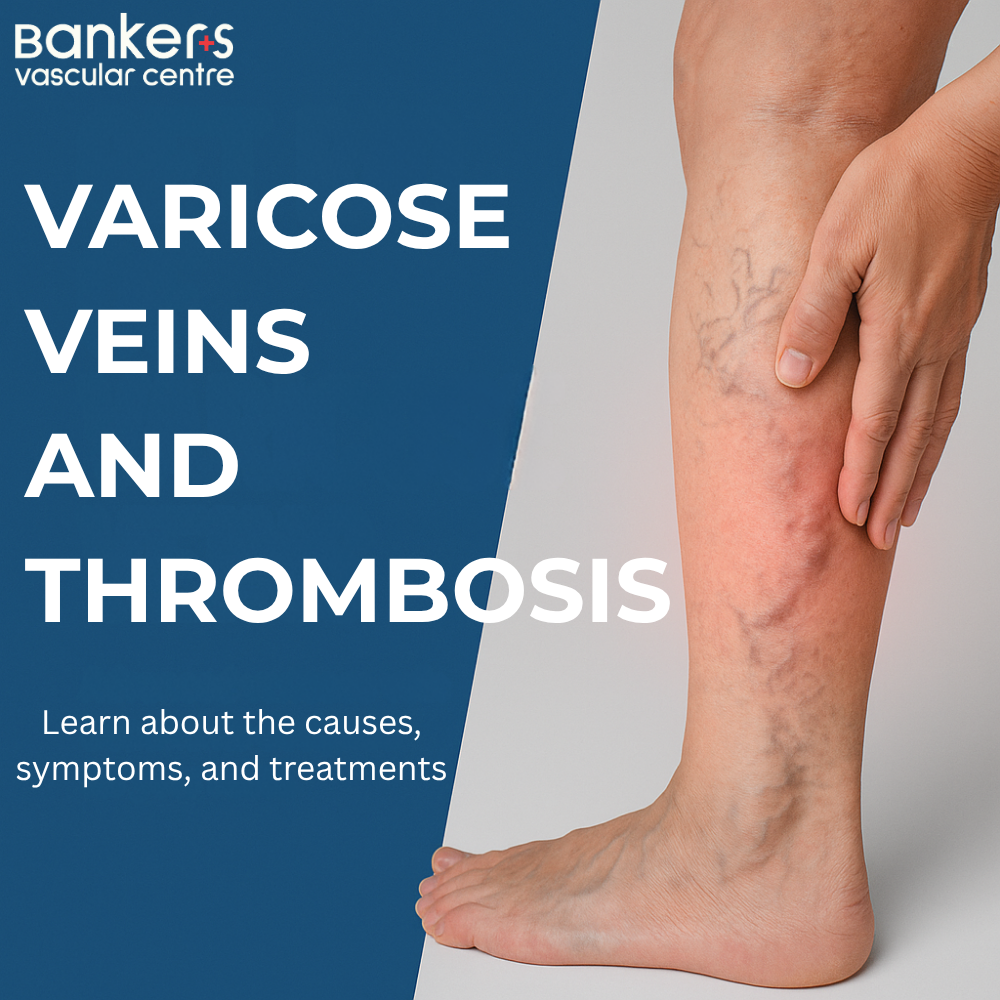All About Heel pain
Non Surgical Heel Pain Ahmadabad



Frozen shoulder basically means your shoulder feels 'frozen'—it's stiff, painful, and hard to move.
Frozen shoulder, as the name suggests, is a condition where the shoulder becomes stiff and movement is limited, almost as if it's 'frozen' in place.
A lot of people struggle with frozen shoulder—yes, even men. But studies show that women are actually more likely to develop this condition.

Your shoulder’s amazing range of motion comes from two main joints working together—the acromioclavicular joint and the glenohumeral joint. These two are the real MVPs when it comes to letting your arm move in almost every direction.
Frozen shoulder happens when the capsule around the glenohumeral joint gets inflamed and tight — almost like it’s frozen in place — making it painful and tough to move your shoulder.

Inflammation of the shoulder joint capsule, which plays a central role in conditions like frozen shoulder, can arise from several underlying factors. Understanding these causes can help you better manage the condition and seek appropriate treatment.
One common contributor is diabetes, which is strongly linked to an increased risk of developing frozen shoulder. High blood sugar levels can affect the connective tissues, making them more prone to stiffness and inflammation.
Another important factor is poor joint biomechanics. This refers to abnormal movement patterns or imbalances in the muscles and structures around the shoulder. When the shoulder doesn’t move properly, it can place extra stress on the joint capsule, leading to irritation and inflammation over time.
Finally, sudden environmental changes—such as abrupt immobilization due to injury, surgery, or even changes in climate—can trigger inflammation. For example, if the shoulder is kept still for an extended period, the joint capsule can stiffen and inflame, contributing to restricted movement.
When the shoulder capsule gets inflamed, it doesn’t just stay swollen—it starts to change. The tissue becomes thicker and tougher as scar tissue builds up, a process called fibrosis. Think of it like a stretchy rubber band slowly turning stiff and tight. This tightening makes it harder to move your shoulder, which is why people with frozen shoulder often feel that their arm is ‘stuck’ or limited in movement.
The inflammation and fibrosis in frozen shoulder usually happen in three stages:

In the beginning, when the shoulder capsule gets inflamed, your body tries to fix the damage by creating scar-like tissue—this process is called fibrosis. Think of it like when you get a cut on your skin: your body heals it, but the new scar tissue is thicker and less stretchy than the original skin. The same thing happens inside your shoulder—normal, flexible tissue gets replaced by tougher, tighter tissue. This is what makes your shoulder feel stiff and hard to move.
Here’s the takeaway: during the early inflammatory phase of frozen shoulder, you might feel more pain but still have some movement. But as the condition progresses into the fibrosis stage—the later phase—the pain usually eases up, while stiffness takes over. At this point, it’s not the pain holding you back as much as the limited range of motion caused by the tightening and thickening of the shoulder capsule.
At Bankers Vascular Hospital, we understand that frozen shoulder doesn’t affect everyone the same way. That’s why we take the time to carefully evaluate both the stage of your frozen shoulder and the unique pattern of pain you’re experiencing. By understanding where you are in the progression—from the painful early phase to the stiffer later stages—we can customize a treatment plan that fits your specific needs. This personalized approach helps us target the root causes of your discomfort and stiffness, so you can regain movement and get back to your daily activities with less pain and more confidence.

Best Non Surgical Varicose veins Treatment-Gujarat